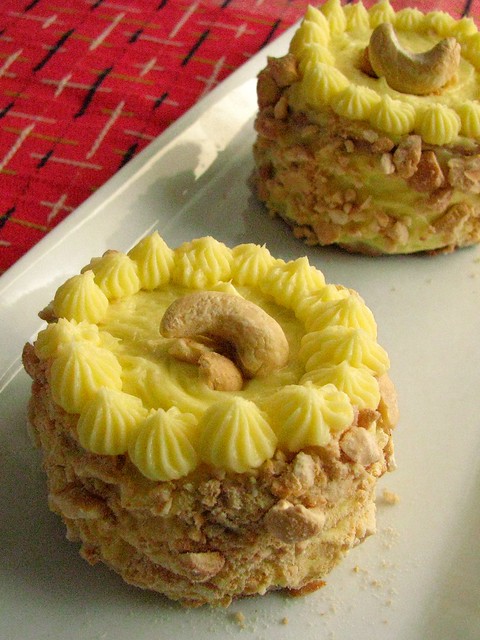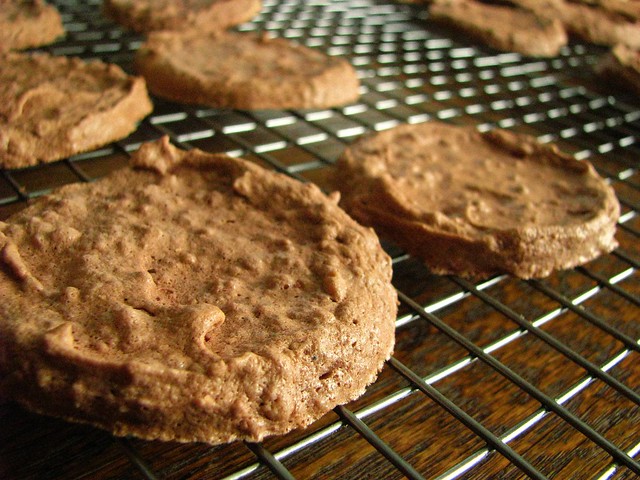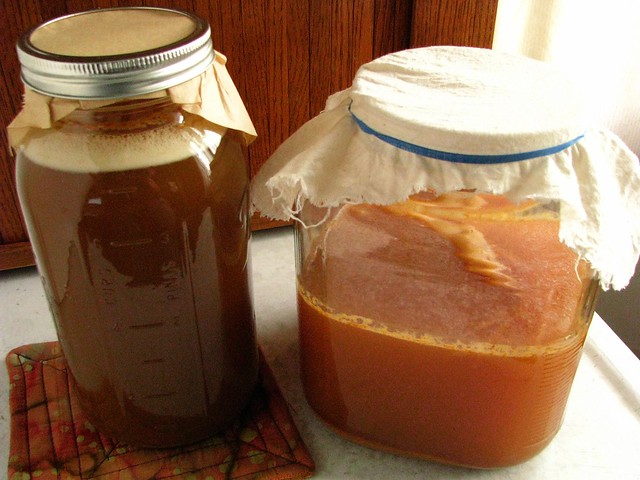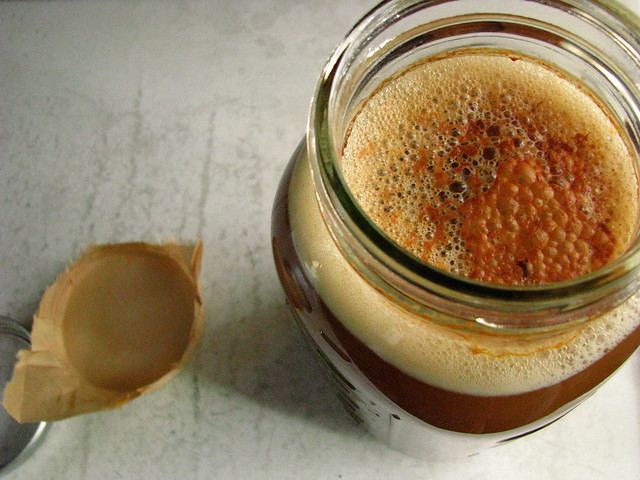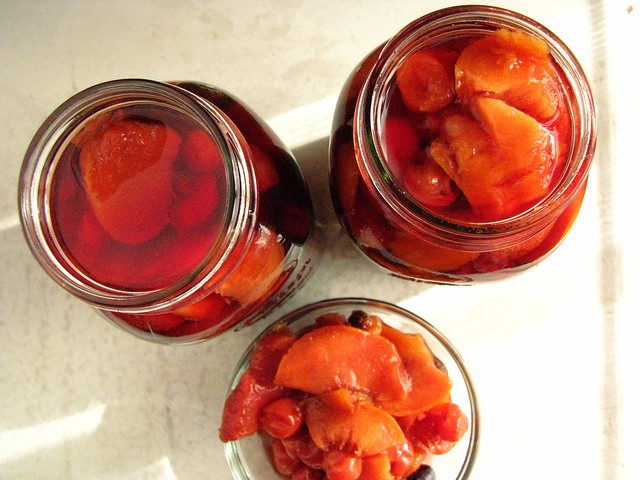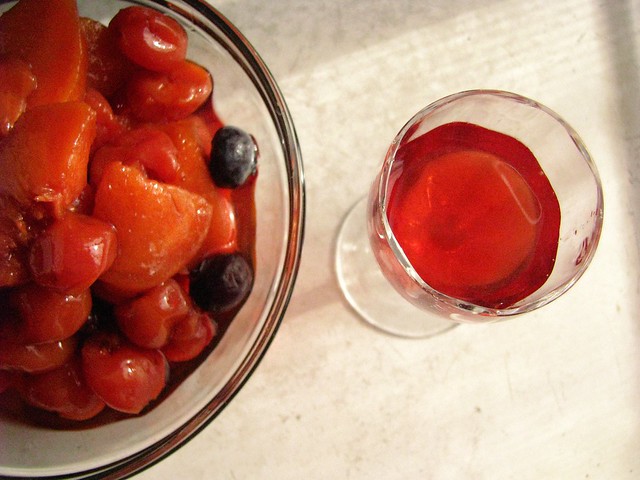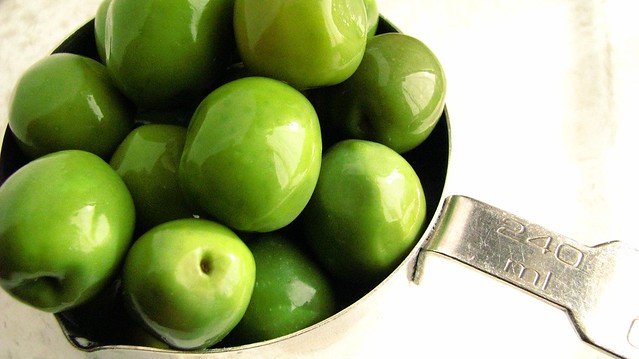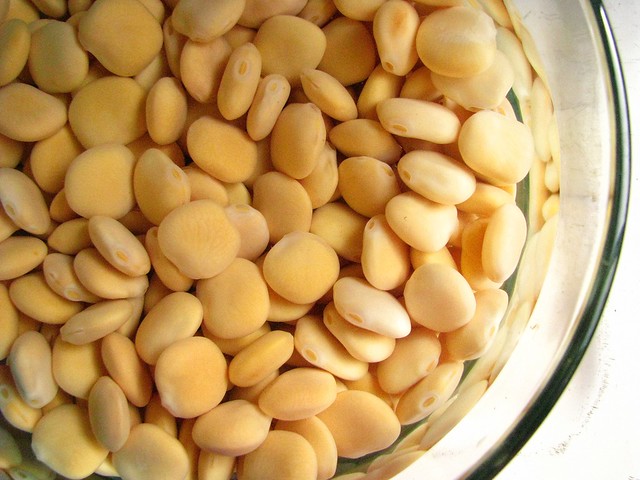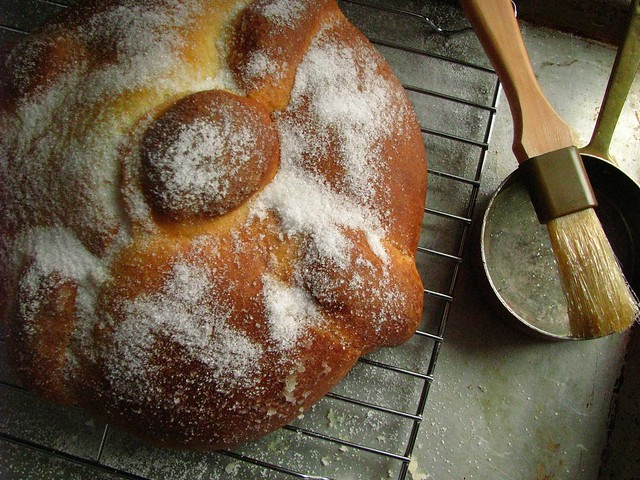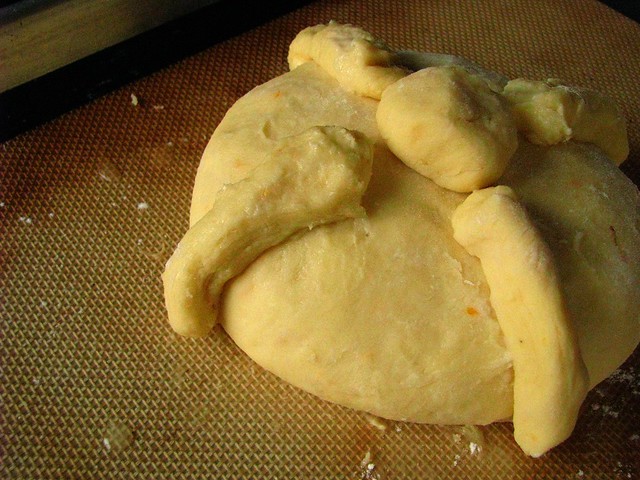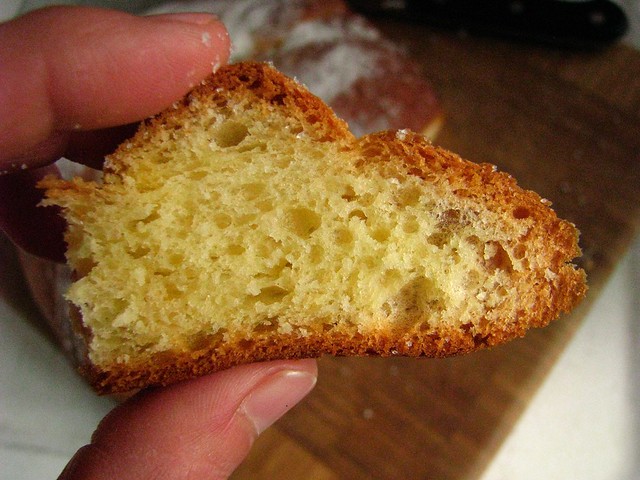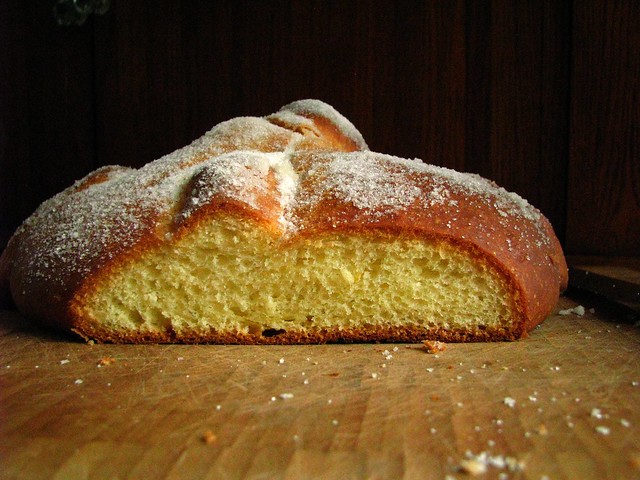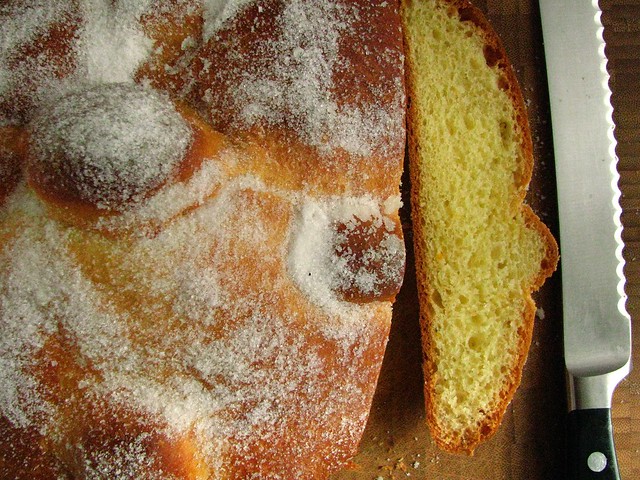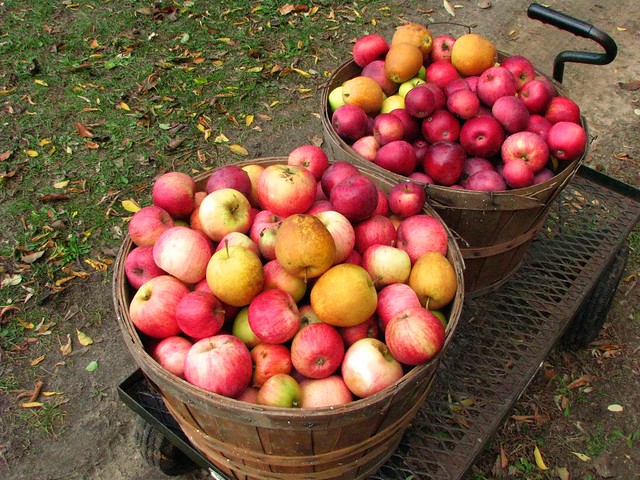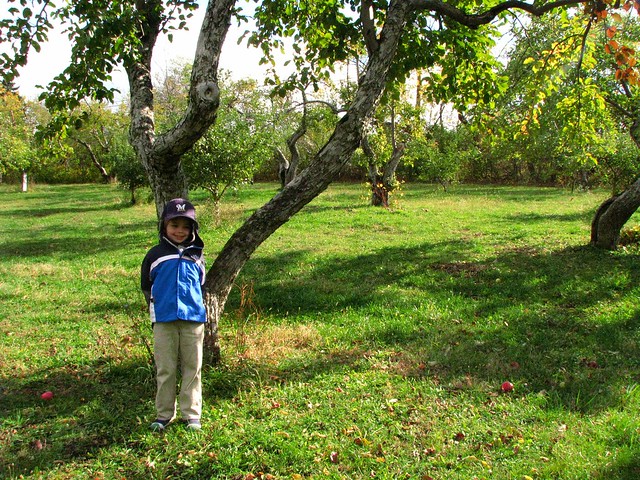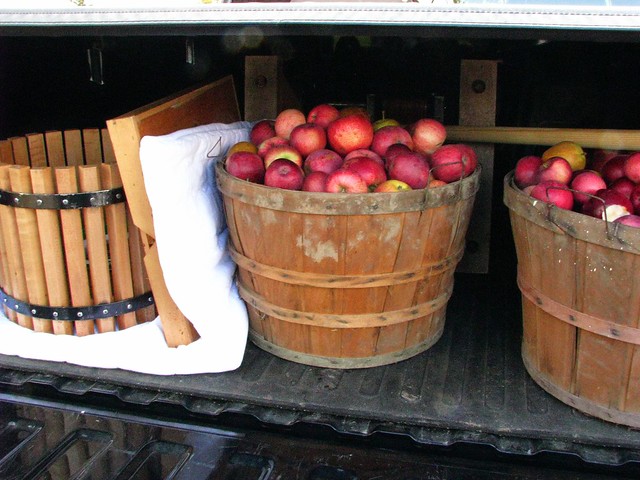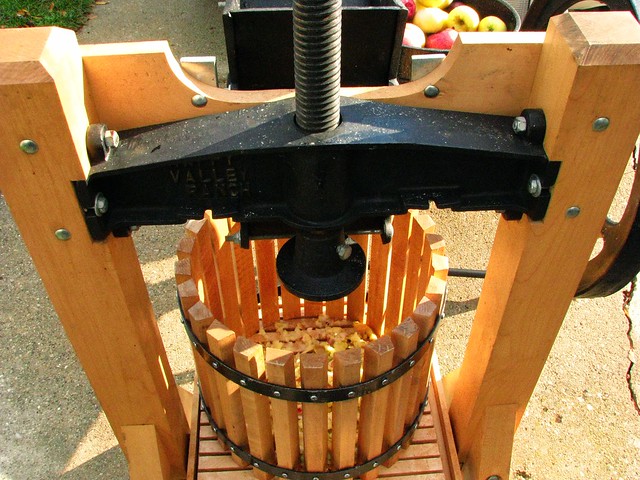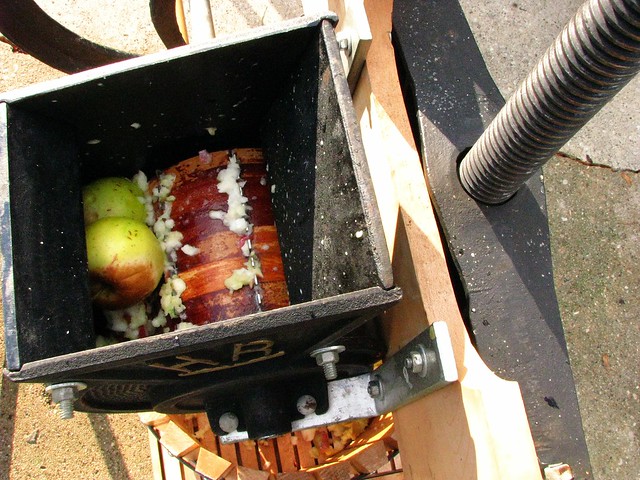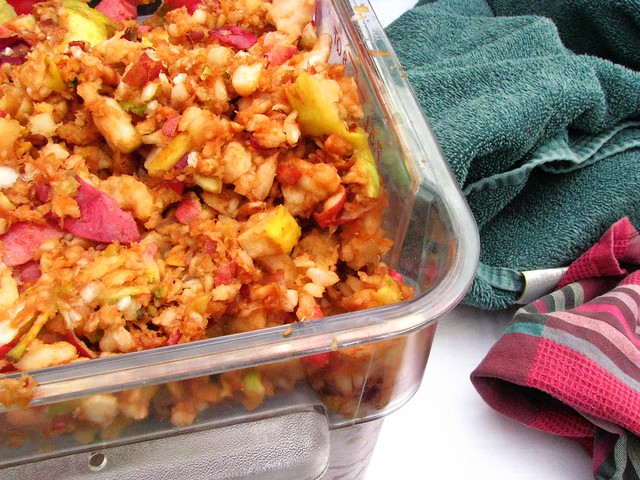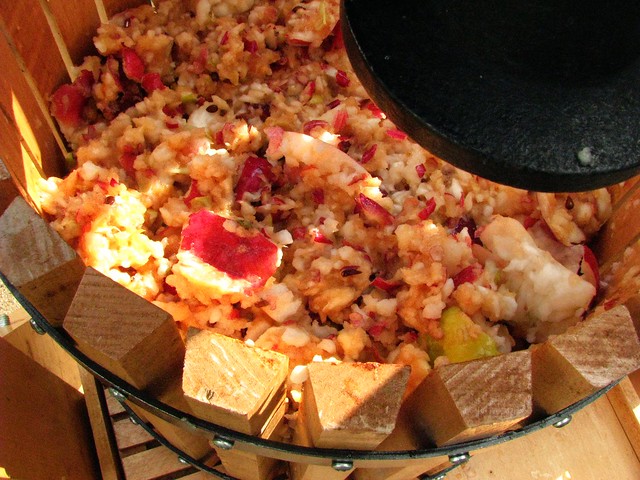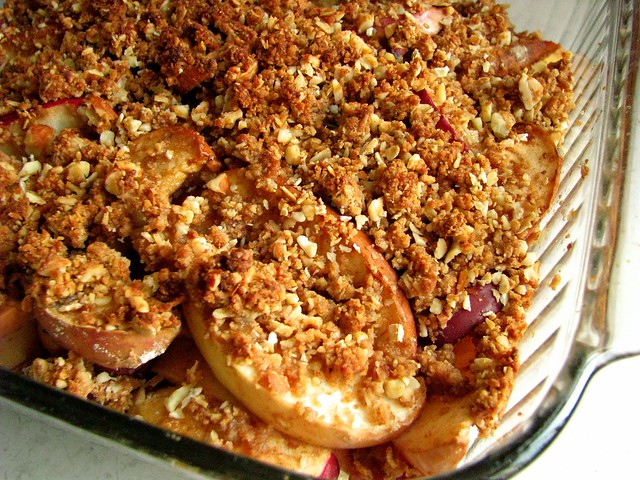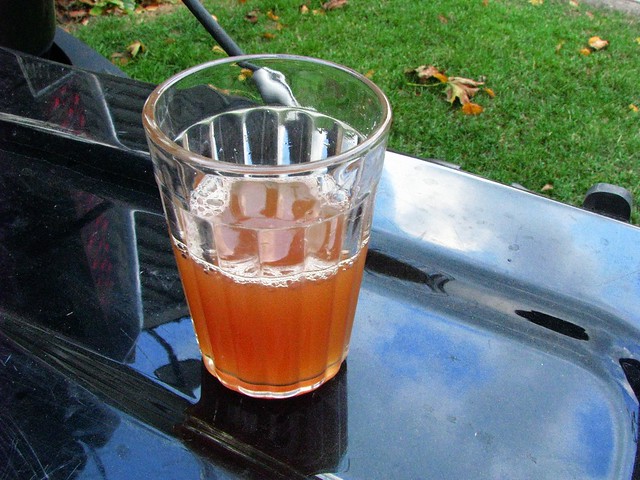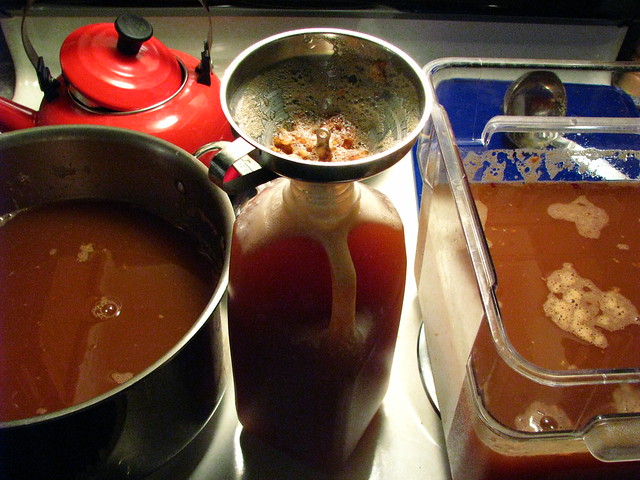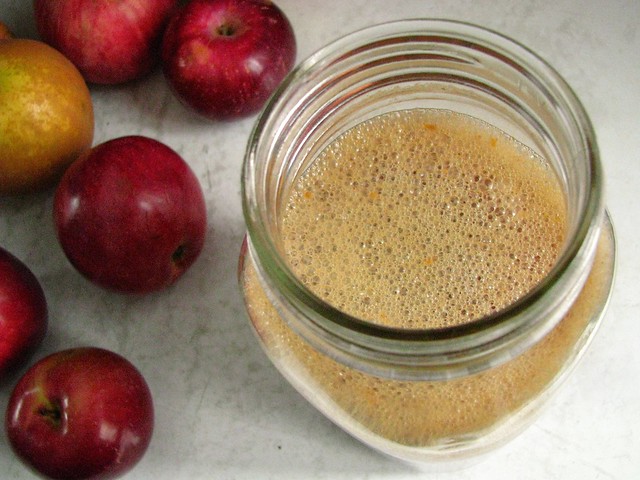Catherine of Munchie Musings was our November Daring Bakers’ host and she challenged us to make a traditional Filipino dessert – the delicious Sans Rival cake! And for those of us who wanted to try an additional Filipino dessert, Catherine also gave us a bonus recipe for Bibingka which comes from her friend Jun of Jun-blog.
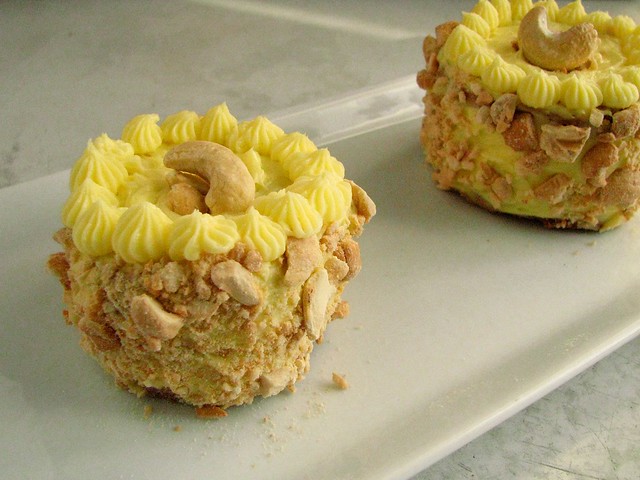
You may notice that I'm 3 days late in posting my challenge this month. That is because I had planned to make this dessert when I visited my Parents over the weekend for 2nd Thanksgiving. We had pies (plural), and pecan tarts, and way too much food, so last minute we agreed that we didn't need the additional dessert.
When I got back, I thought I would just skip it. I cleaned my house, I carried in my Christmas tree. I cleaned out my refrigerator, which needed it desperately, and I attacked the laundry and did a little sewing. Then today, the last day of November, I knew I just had to give this one a go. You know you are a baker at heart when you are sitting over your morning coffee and decide on a whim to soak 10 eggs in warm water since they needed to be a room temperature to begin a project...
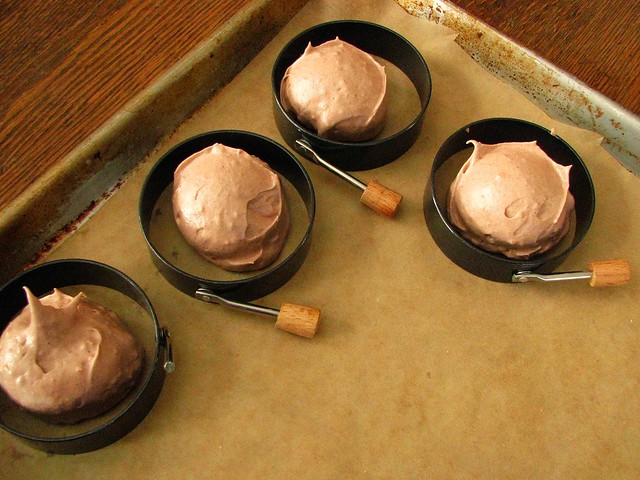
Sans Rival cake, so called since it has no rival, is a cake made from cashew meringue layers and my old nemesis, French Buttercream. French (and Italian) buttercream and I don't seem to understand each other too well. I'm thankful for challenges that force me to practice them or I'd always choose the more cloying confectioner's sugar-based frostings.
I'm not absolutely certain that the frosting I made today was proper, after adding the boiling sugar-water it took an entire half hour in my stand mixer on high to whip it down to room temperature. I added the butter, slowly, cube by cube until it disappeared and then I tasted. I decided to flavor it with a pinch of salt and some almond extract, and then I tasted it again. I was pretty sure this is what angels dine on. I had a flashback to standing around the kitchen not too long ago with my Parents and sampling some really (really) great donuts - and one of us said "How can these be bad for you, they taste so light, and so good?" Another flashback immediately appeared to me of a high school friend who fed her little brother a stick of butter so he'd keep his pudgy fingers out of the butter dish. That kid just loved butter, so much he would eat spoonfuls of it. He would love this frosting. I could devote a lunch to it. Oh yes, I did kind of do that today.
I'm not absolutely certain that the frosting I made today was proper, after adding the boiling sugar-water it took an entire half hour in my stand mixer on high to whip it down to room temperature. I added the butter, slowly, cube by cube until it disappeared and then I tasted. I decided to flavor it with a pinch of salt and some almond extract, and then I tasted it again. I was pretty sure this is what angels dine on. I had a flashback to standing around the kitchen not too long ago with my Parents and sampling some really (really) great donuts - and one of us said "How can these be bad for you, they taste so light, and so good?" Another flashback immediately appeared to me of a high school friend who fed her little brother a stick of butter so he'd keep his pudgy fingers out of the butter dish. That kid just loved butter, so much he would eat spoonfuls of it. He would love this frosting. I could devote a lunch to it. Oh yes, I did kind of do that today.
But enough on the frosting... Cashews, being the most buttery of all nuts in my opinion, were an extravagant purchase for me and a good fit for the dessert, as well as being traditional. I had already toasted up the amount needed for the challenge, ground about half into fine powder for inclusion in the meringue itself, and reserved the rest of the pebbly fellows for the outside decoration. What took me the most time then, was making petite portions by recommissioning my egg rings as molds for smaller-sized meringues. I think I got about 44, plus a small, thin sheet that I spread on the parchment, a result of my spatula gleaning all I could from the edges of the mixer.
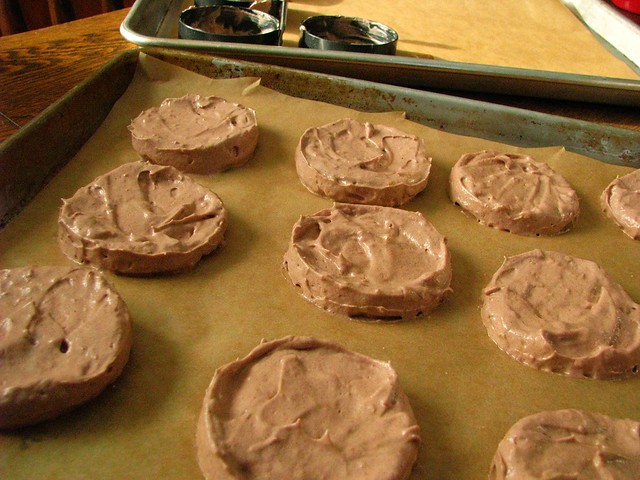
I quickly developed a good method for uniformly small portions. I put one scoop of meringue in each ring and spread evenly with an offset butter knife. Then, I ran a small paring knife around the edge to "break the seal", and removed the molds. Finally, I evened out the tops of the meringues with the knife. Baking these was a little trickier. Even though they weren't that thick, they still took upwards of 30 minutes to even get close to being dried out and crisp. In fact, I took them all out prematurely, and after making the frosting, I reheated the oven, and popped them all back in for 15 minutes to dry out some more. That did the trick; they felt light and not spongy, and had that Styrofoam sound that meringues typically do.

egg yolks: after lightening them they were still a sunny yellow since they were nearly orange to begin with...
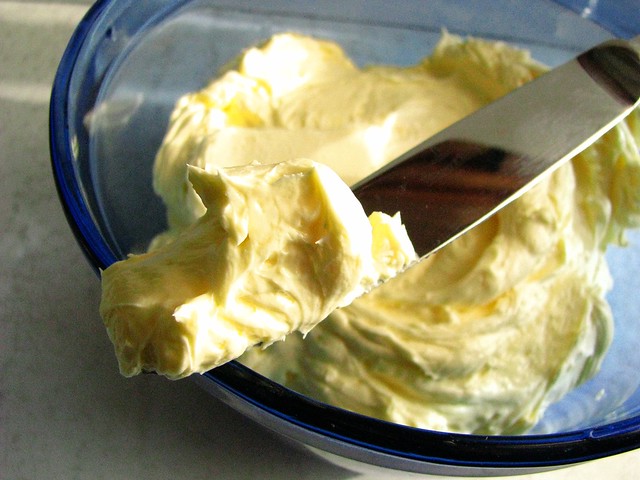
that goes to say that my finished frosting then looked unsurprisingly like really good butter. really good butter that angels eat.
That frosting chilled for a good hour, and maybe the butterfat in my butter is too high, but it came back to room temperature so fast that it was really hard to frost with. I did my best, and hid the rest with clever piping - but I did have to pause quite a few times and pop everything in the refrigerator. I froze one before trying to cut it in half:
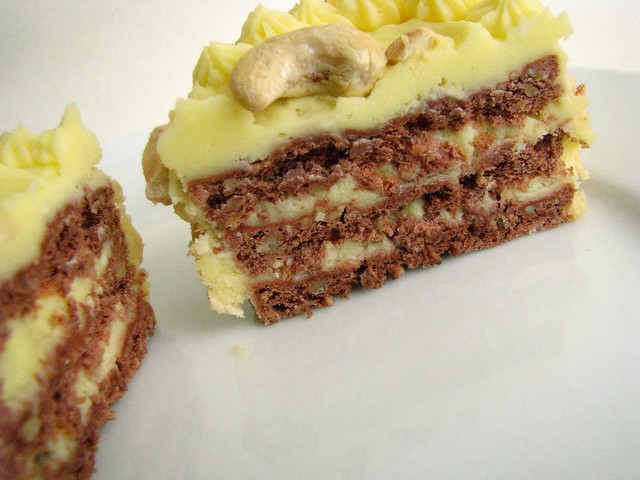
I broke the "tray meringue" sheet into shards, and made a pretty deconstructed version:
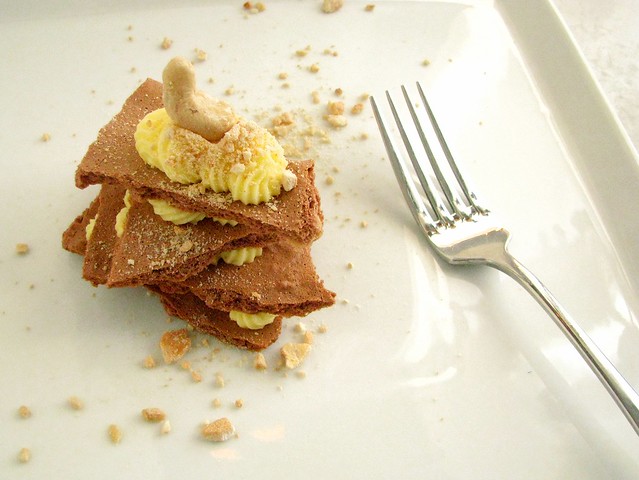
I've already confessed to quite a bit of frosting consumption, but I did also have a few bites of fully finished dessert. This is rich, and I am glad I went with almond extract in the flavoring of my frosting. While the cashews have a heavy, buttery, toasty taste, they needed the freshness of astringent almond to cut through it. It also bears noting that I am positively addicted to almond extract...
If I make this cake again, I will definitely make one large cake. I think my frosting woes may have been solved if I handled it less, and one large cake would have easily enabled that. I also think I may leave out the cocoa powder which was optional (and not traditional) in the meringue. It had more of a mild "mocha" flavor than a full out chocolate one, but I suspect it did something to the texture of the meringues that I wasn't entirely pleased with.
If you reread above and find that I thought this cake was rich, buttery, sweet, texturally suspect and tedious, you would be correct - but it was also just decadent enough to capture my imagination. I'm really looking forward to trying it again tomorrow, when my taste buds have started forgetting the mouth-coating properties of that angel frosting, and I have a clean palate to discern with. I really did enjoy this challenge, which was more of a challenge than I thought it would be!
I'm not reprinting the recipe here this month, since I did follow it exactly (by metric weights), using the cocoa powder in the meringue and almond extract in the frosting. You can find the recipe here at the Daring Kitchen, as well as the blogroll guide to so many Sans Rival cakes your head will spin.
I'm not reprinting the recipe here this month, since I did follow it exactly (by metric weights), using the cocoa powder in the meringue and almond extract in the frosting. You can find the recipe here at the Daring Kitchen, as well as the blogroll guide to so many Sans Rival cakes your head will spin.
Tomorrow is a new month and a new challenge, and I'd be lying if I said that I don't get a little too excited on the eve of each new reveal. What will I learn next? Stay tuned.
